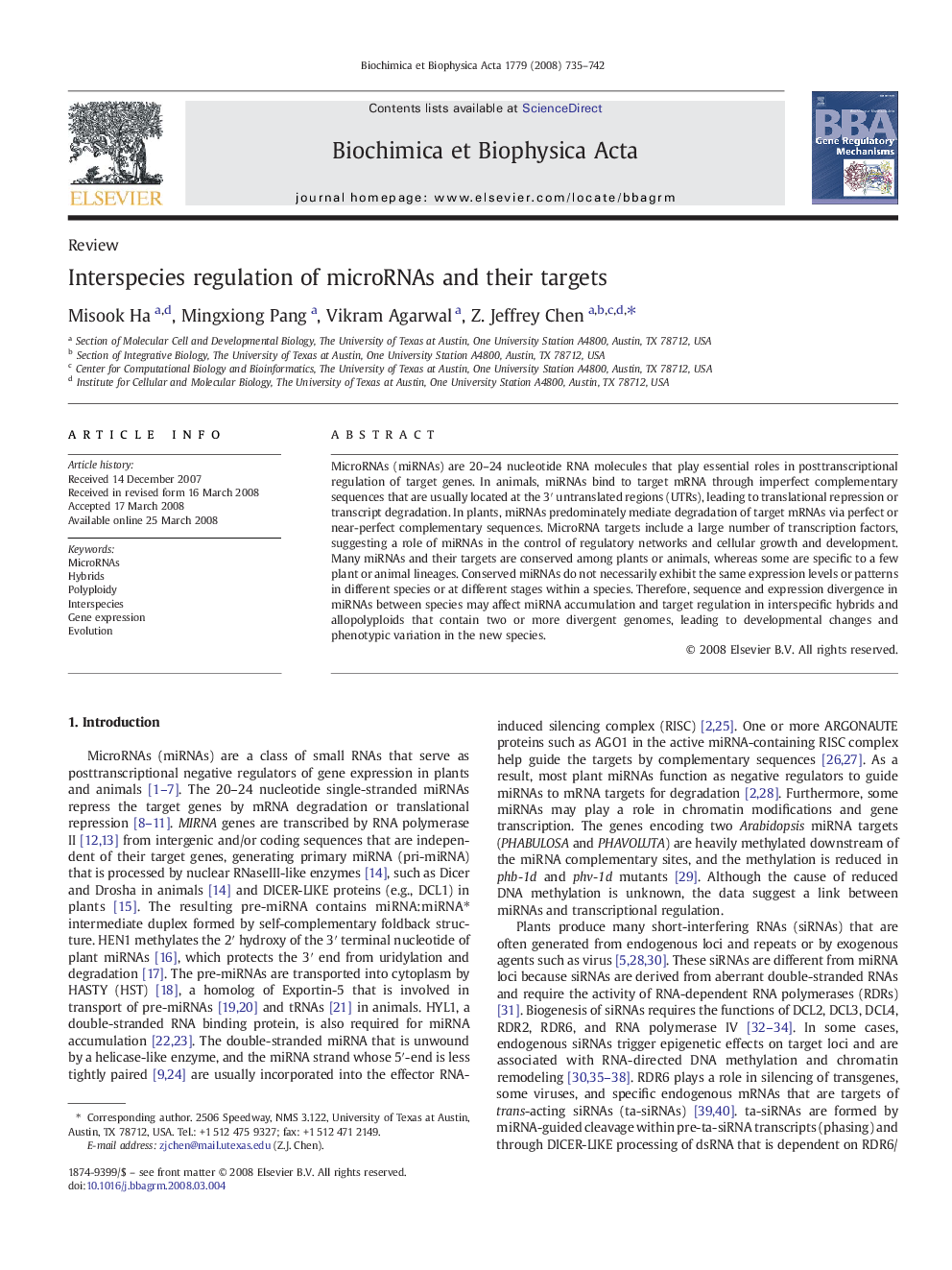| Article ID | Journal | Published Year | Pages | File Type |
|---|---|---|---|---|
| 1946982 | Biochimica et Biophysica Acta (BBA) - Gene Regulatory Mechanisms | 2008 | 8 Pages |
MicroRNAs (miRNAs) are 20–24 nucleotide RNA molecules that play essential roles in posttranscriptional regulation of target genes. In animals, miRNAs bind to target mRNA through imperfect complementary sequences that are usually located at the 3′ untranslated regions (UTRs), leading to translational repression or transcript degradation. In plants, miRNAs predominately mediate degradation of target mRNAs via perfect or near-perfect complementary sequences. MicroRNA targets include a large number of transcription factors, suggesting a role of miRNAs in the control of regulatory networks and cellular growth and development. Many miRNAs and their targets are conserved among plants or animals, whereas some are specific to a few plant or animal lineages. Conserved miRNAs do not necessarily exhibit the same expression levels or patterns in different species or at different stages within a species. Therefore, sequence and expression divergence in miRNAs between species may affect miRNA accumulation and target regulation in interspecific hybrids and allopolyploids that contain two or more divergent genomes, leading to developmental changes and phenotypic variation in the new species.
